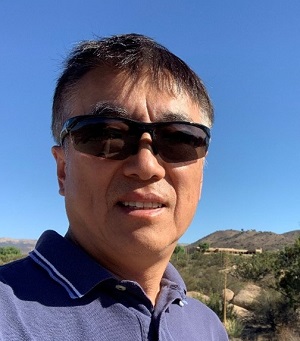The Satellite Borne CALIPSO Lidar and Its Various Applications
The Cloud-Aerosol Lidar and Infrared Pathfinder Satellite Observation (CALIPSO) satellite is a NASA and French CNES joint satellite program. It was launched in 2006 to provide new insight into the role that clouds and atmospheric aerosols play in regulating Earth's weather, climate, and air quality. It has a design lifetime of three years and has been operating in space for 16+ years since its launch. A two-wavelength (532 nm and 1064 nm) polarization-sensitive backscatter lidar is a key instrument on board the CALIPSO payload that provides high-resolution vertical profiles of aerosols and clouds. In this presentation I will give a brief introduction to the CALIPSO lidar and its various applications with a focus on dust transatlantic transport.
Date and Time
Location
Hosts
Registration
-
 Add Event to Calendar
Add Event to Calendar
Loading virtual attendance info...
- Contact Event Hosts
- Co-sponsored by Ramesh Singh (rsingh@chapman.edu)
Speakers
 Dr. Zhaoyan Liu of NASA
Dr. Zhaoyan Liu of NASA
The Satellite Borne CALIPSO Lidar and Its Various Applications
The Cloud-Aerosol Lidar and Infrared Pathfinder Satellite Observation (CALIPSO) satellite is a NASA and French CNES joint satellite program. It was launched in 2006 to provide new insight into the role that clouds and atmospheric aerosols play in regulating Earth's weather, climate, and air quality. It has a design lifetime of three years and has been operating in space for 16+ years since its launch. A two-wavelength (532 nm and 1064 nm) polarization-sensitive backscatter lidar is a key instrument on board the CALIPSO payload that provides high-resolution vertical profiles of aerosols and clouds. In this presentation I will give a brief introduction to the CALIPSO lidar and its various applications with a focus on dust transatlantic transport.
Biography:
Dr. Zhaoyan Liu is currently a senior Electro-Optical Sensor System Engineer at the Engineering Directorate of the NASA Langley Research Center (LaRC). He has 35+ year experience in laser, lidar and lidar remote sensing. Dr. Liu pioneered the use of Mach-Zehnder interferometer in lidar remote sensing when he was in Japan. He was also involved in a Japanese space lidar program (ELISE) and in charge of developing data processing algorithms. In 2001, he started to work for NASA. Since then, he has been a member of the CALIPSO Lidar Science Working Group and developed a couple of algorithms used in the CALIPSO lidar data processing at LaRC. In recent years, he joined a few airborne lidar programs including a differential absorption lidar for CO2 measurements and a coherent Doppler lidar for wind and aerosol measurements.

